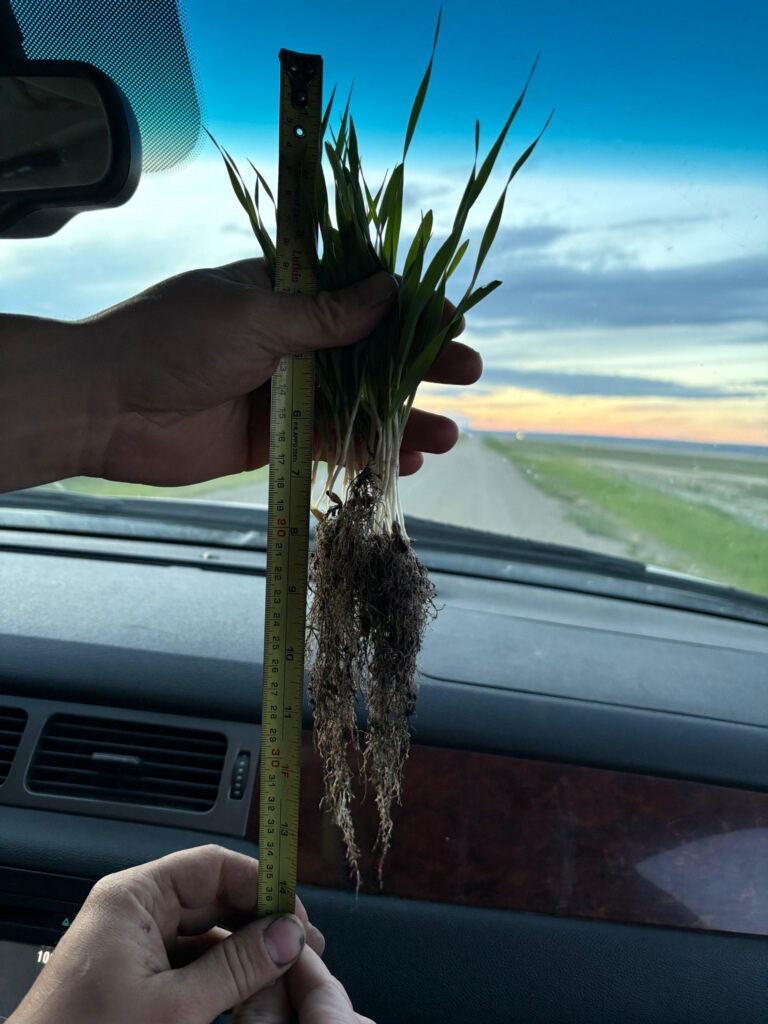
Phosul Dry Granular Phosphate
Join us for a quick conversation to answer any questions about Phosphate Fertility
Free30 min
Online meeting via Ringcentral - https://v.ringcentral.com/join/165921668
Using Phosul is Easy. Apply it Pound for Pound with total MAP.
Phosul Homogeneous Granule Resets the Standard for Phosphate Mineralization. Due to the increased efficiency of phosphorus delivery, Phosul at 20% P2O5 (>90%), matches Phosphorus delivery to the plant of MAP (<30%) at 52%!
Product Contains:
20 % available P2O5
20% Calcium
4 % Sulfur (as elemental)
7% Silica
Other Information
Crush Test - 0.1 MPa (15 PSI) (Medium-Hard)
Specific Gravity - 1.5 (93 lbs per Cu Ft)
Salt Index - 7
Available in 120 SGN (1 - 2 mm) for Broadcast applications and 240 SGN (2 - 4 mm) for in-furrow/ drill applications.
Typical Application Rates
Cash Crops - Apply 50 - 75 lbs per acre in-furrow
Perennial Pasture - Broadcast up to 500 lbs per acre every few years depending on soil test levels.
Typical cost per use in-furrow is - $30 - $45 per acre.
Sold by the Metric Tonne in loose bulk 32 - 34 MT Loads.
Contact for Todays Bulk Pricing:
Pricing as of Feb 14, 2025
Current Winter Pricing 2025
Grande Prairie, AB - $1385 /MT
Westlock, AB - $1353 /MT
Lethbridge, AB - $1305 /MT
Rosetown, SK - $1345 /MT
**Pricing subject to change at any time.
Download the Science
MSU Phosphate Availability Study
2 Year Side by Side Alfalfa Study
MSU Winter Wheat Field Study Poster
The New Standard
For Phosphate Fertilizer
Winner of the 2024 EPA Green Chemistry Challenge
Grows With Nature®
PhoSul utilizes an all-natural, patented process that blends phosphate rock, sulphur, and amorphous silicon into a homogenous mineral granule, is not water-soluble, and does not runoff in surface water.
Phosul’s key innovation, compared to standard rock phosphate or blends of rock phosphate and sulfur, is the inclusion of silica. Silica has a higher affinity for the calcium ions released from rock phosphate than the phosphate itself, preventing insoluble calcium phosphate from reforming. When soil microbes convert the elemental sulfur in Phosul to sulfuric acid, the rock phosphate is dissolved, and the silica steps in to keep calcium from binding back to the liberated phosphate. This mechanism greatly increases the amount of plant-available phosphate. Furthermore, because these reactions depend on microbial activity that requires water at the same time plants do, the phosphate is delivered to the plant precisely when it’s needed.
All Ingredients are Procert and OMRI-listed and when activated, start a microbial reaction that creates a "calcium sink" allowing the natural liberation of phosphate, making it almost all entirely plant-available.
PhoSul is environmentally friendly and mineralizes soils. It competes in both performance and economics with chemically produced phosphate fertilizers when applied to phosphorous-deficient soils.
Validated in the Lab, Greenhouse and Field
PhoSul has been working with four of Montana State University research stations on a variety of field crop tests (wheat and alfalfa) over the last four years at several of the MSU Agricultural stations including those at:
• Moccasin, MT
• Corvallis, MT
• Fort Ellis / Bozeman, MT
• Sydney, MT
Additional commercial field testing has been conducted on Potatoes, Alfalfa, Canola, Winter, Wheat, Spring Wheat, and various fruits, vegetables, and berries.
Facts You Should Know
PhoSul has multiple benefits compared to other commercial phosphate fertilizers that all add up to favourable economics and less pollution to the earth.
Also contains Sulfur, Silicon, and Calcium.
Is NOT water soluble and breaks down through natural microbial action for up to 94% availability.
Does NOT leach or runoff fields into waterways.
Positive effects for multiple growing seasons.
Less applications saves time, fuel, and fertilizer.
Not a temporary fix, it mineralizes and makes soils healthy and alive for the longterm.
Favorable results in field trials compared side by side to commercial Phosphate fertilizers.
1/5 the Carbon footprint of conventional Phosphate fertilizers (MAP/DAP).
Competitive with current commodity pricing of conventional (non-organic) Phosphate fertilizers.




